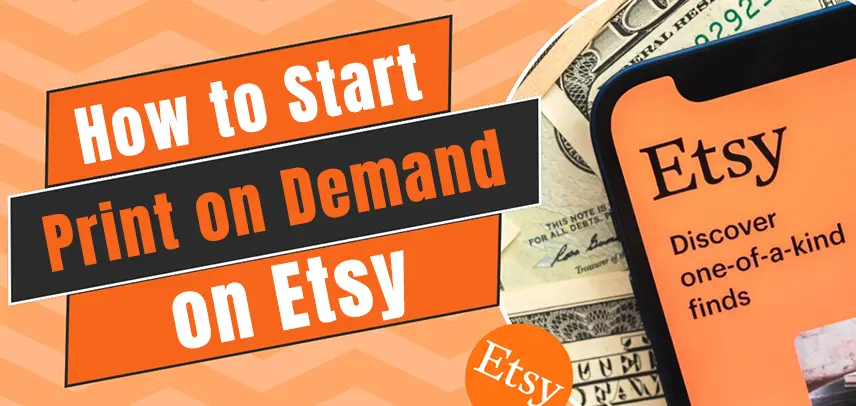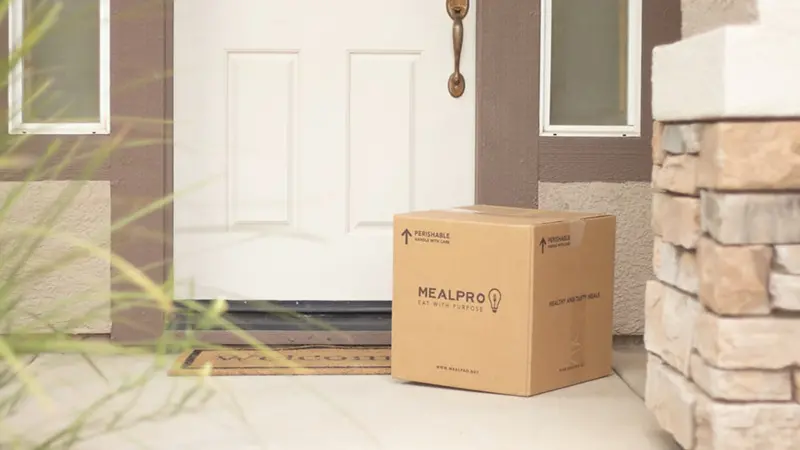
How to Start a Print-on-Demand Business on Etsy: A Complete Guide for Beginners
The allure of starting an online business has become more enticing than ever before, and Print on Demand (POD) is at the forefront of this entrepreneurial revolution. POD is a business model where products are printed and shipped only after a sale is made, eliminating the need for inventory and significantly reducing upfront costs. This model has gained tremendous relevance in the current market due to its low-risk nature and scalability, allowing entrepreneurs to focus on design and marketing without worrying about inventory management or upfront costs.
Etsy, known for its commitment to creative and unique products, has emerged as a prime platform for POD businesses. With its global reach and community of buyers looking for bespoke and personalized items, Etsy print-on-demand offers a distinct opportunity for entrepreneurs to thrive. The platform’s emphasis on creativity and individuality makes it the perfect place to launch a POD business that stands out.
Page overview:
Understanding the Etsy Marketplace
Step 1 – Setting Up Your Etsy Shop
Step 2 – Developing Your Product Line
Step 3 – Creating Effective Etsy Listings
Step 4 – Pricing Your Products
Step 5 – Marketing and Promotion
Step 6 – Managing Your Etsy Shop
Step 7 – Scaling Your Business
Understanding the Etsy Marketplace
Before diving into setting up your Etsy shop, it’s crucial to understand the marketplace and its dynamics. Etsy is home to a diverse user base, with millions of active buyers seeking unique, handmade, and personalized products.
In 2023, Etsy’s revenue reached $2.748 billion, with approximately 500 million monthly visitors to the platform. Numbers don’t lie – these statistics show that Etsy is a popular marketplace worldwide. But what is the secret to success on Etsy? Well, analyzing successful POD shops on Etsy can provide valuable insights into what works.
These shops often excel due to their focus on niche markets, exceptional design quality, and excellent customer service. Success on Etsy isn’t just about having a great product; it’s also about carving out a unique space in the marketplace that appeals to a specific segment of Etsy’s broad audience.
In a marketplace as vast as Etsy’s, standing out requires a clear focus. Whether it’s quirky t-shirts, personalized mugs, or custom posters, finding a niche that resonates with a specific group of customers can be the key to unlocking significant sales and building a loyal customer base.
Wondering how to start a print-on-demand business on Etsy? Let’s walk through the steps to launch your POD business on Etsy.
Step 1 – Setting Up Your Etsy Shop
Starting print on demand on Etsy can be both exciting and rewarding. Here’s a detailed guide to setting up your Etsy shop:
- Visit Etsy.com: Start by navigating to Etsy.com. On the homepage, you’ll find an option to register for a new account. Click on “Sign-up” and follow the instructions.
- Set Up Your Shop: Once your account is created, locate the “Sell on Etsy” link and select it to start the process of opening your new shop.
- Choose Your Shop Preferences: Etsy will guide you through a series of questions about your shop preferences, including your shop’s language, country, and currency. This information helps tailor your shop to your location and target market.
- Name Your Shop: Your shop name is crucial; it’s how customers will remember and find you. Choose a name that is unique, easy to remember, and reflects the nature of your POD products. Etsy requires that shop names be 4-20 characters long, without spaces or special characters. If your chosen name is taken, try variations until you find one that’s available.
- Stock Your Shop: Add listings to your shop. Each listing should include high-quality images of your products, detailed descriptions, pricing, and shipping information. For POD items, ensure your product images accurately reflect the final product’s quality and design.
- Set Up Payment and Billing: Select how you’ll be paid for your sales and how you’ll pay your Etsy fees. Etsy offers various payment options, including Etsy Payments (which accepts credit cards, debit cards, Etsy Gift Cards, etc.) and PayPal.
- Launch Your Shop: Once everything is set up and you’re ready to go, click “Open Your Shop.”
Congratulations, you’re now an Etsy seller!
Tips for Choosing a Catchy Etsy Shop Name and Creating an Appealing Brand Identity
- Reflect Your Brand: Your shop name should encapsulate the essence of your brand. Consider your niche, what makes your products unique, and how you want customers to feel when they see your brand.
- Be Memorable: A catchy name sticks in customers’ minds. Aim for something easy to spell and pronounce.
- Visual Identity: Create a cohesive and recognizable visual identity. This includes developing a logo, selecting a color scheme, and adopting a consistent presentation style for your products. Having a consistent approach is essential in creating a sense of trust and familiarity among customers.

Step 2 – Developing Your Product Line
Developing your product line is a pivotal step in ensuring the success of your Etsy print-on-demand business.
This stage involves selecting products that resonate with your brand, establishing partnerships with reliable suppliers, and designing high-quality, marketable products.
Here’s how to approach each of these crucial aspects:
Choosing Products That Fit Your Brand and Appeal to Your Target Market
- Identify Your Niche: Before selecting products, clearly define your niche and understand the needs and preferences of your target audience. Whether it’s eco-friendly stationery, personalized gifts, or niche-specific apparel, choosing a clear focus will help you stand out on Etsy.
- Research Trends: Keep an eye on emerging trends within your niche by using tools like Google Trends, Etsy’s Trending Items, and social media to identify products that are currently popular or up-and-coming.
- Consider Product Range: Select a range of products that complement each other to encourage multiple purchases. For instance, if you’re focusing on personalized home decor, you might include custom prints, engraved coasters, and personalized pillows.
Partnering with the Right Print on Demand Suppliers
- Quality and Reliability: Choose suppliers known for their product quality and reliability in fulfillment, such as Inkedjoy. This can make or break your brand’s reputation on Etsy. Research reviews, request samples, and compare several suppliers to ensure they meet your standards.
- Production Times: Consider the production and shipping times. Your customers will expect timely delivery, so ensure your suppliers can meet these expectations without compromising on quality.
- Integration with Etsy: Some POD suppliers offer direct integration with Etsy, simplifying the process of listing products and managing orders. Look for suppliers that provide this feature to streamline your operations.
Designing Products and Creating High-Quality Mockups
- Design for Your Audience: Design products with your target audience in mind. Your designs should resonate with their interests, values, and aesthetics. Utilize design software or hire a designer if needed to ensure your products have a professional and appealing look.
- Create High-Quality Mockups: Use high-quality mockups, which Inkedjoy offers, to showcase your products. Mockups should reflect the product realistically and attractively, highlighting details and design quality. Good mockups can significantly increase the perceived value of your products and encourage purchases.
- Iterate Based on Feedback: Launch your initial product line and be open to iterating based on customer feedback. The best product lines evolve over time, improving in response to what customers love and what sells.
Step 3 – Creating Effective Etsy Listings
Creating effective Etsy listings is essential for attracting customers and driving sales.
This involves crafting compelling product descriptions, producing high-quality visuals, and understanding and implementing Etsy SEO best practices.
Here’s how to make your listings stand out and captivate potential buyers.
Writing Compelling Product Descriptions
- Highlight Features and Benefits: Start with a concise overview that highlights the key features of your product. Then, delve into the benefits these features bring to your customers. For instance, if you’re selling custom t-shirts, mention the material quality and how the design personalization makes it unique.
- Use Bullets for Key Information: Break down important details like size, materials, color options, and care instructions into bullet points for easy readability.
- Tell a Story: Infuse your brand’s voice and story into the description. Explain the inspiration behind the product or how it can fit into the customer’s life.
- Include Customization Instructions: If your product is customizable, clearly explain how customers can provide their customization details (names, dates, choices of colors, etc.).
Best Practices for Product Photography and Creating Visuals That Sell
- Use Natural Light: Photograph your products in natural light to capture their true colors and details. Avoid harsh shadows or overly bright spots.
- Showcase Different Angles: Provide multiple photos showing different angles and details of the product. If applicable, include images of the product in use to give customers a sense of scale and functionality.
- Create Lifestyle Shots: Lifestyle shots, where your product is shown in a real-life context, are particularly effective for home decor, clothing, and accessories.
- Quality Over Quantity: While having several images is beneficial, prioritize the quality of each image. High-resolution, clear, and well-composed photos can significantly impact a customer’s decision to purchase.

Understanding SEO for Etsy and Optimizing Listings for Better Visibility
- Use Relevant Keywords: Identify keywords that potential customers might use to find products like yours. Include these keywords naturally in your title, description, and tags.
- Optimize Your Titles: Start your titles with the most important keywords. Keep it readable and informative. For example, “Personalized Silver Necklace – Custom Engraved Pendant – Gift for Her.”
- Fill Out All Tags: Etsy allows you to use up to 13 tags per listing. Use all of them to maximize your chances of appearing in search results. Think of variations of your main keywords, synonyms, and related terms.
- Leverage Categories and Attributes: Properly categorize your product and fill out the attribute sections (like color, occasion, and material) during the listing process. These help Etsy’s algorithm understand and categorize your product better, improving visibility.
Step 4 – Pricing Your Products
Pricing your products is a critical step in running a successful print-on-demand business on Etsy.It involves balancing competitiveness with profitability to attract customers without undercutting your own revenue.Here’s how to approach pricing for your print on demand products, keeping in mind the unique cost structure associated with selling on Etsy.
Understanding the Cost Structure of Print on Demand on Etsy
Before setting your prices, it’s crucial to understand all the costs involved in producing and selling your print on demand products on Etsy. These costs typically include:
- Production Costs: This is the amount you pay your POD supplier for printing and producing each item. It varies depending on the product type, materials, and design complexity.
- Shipping Costs: Depending on your arrangement with your POD supplier, shipping costs might either be included in the production cost or charged separately. Consider both domestic and international shipping rates if you plan to sell globally.
- Etsy Fees: Etsy charges a listing fee ($0.20 per item), a 6.5% transaction fee on the sale price (including the shipping price set by you), and a payment processing fee that varies by country. If you opt into Etsy’s offsite ads, there’s also an advertising fee for sales made through these ads.
- Taxes: Be aware of any applicable sales taxes, VAT, or income taxes that might affect your profit margins.
Pricing Your Products Competitively While Ensuring Profitability
- Research Your Market: Look at similar POD products on Etsy to understand the price range. Note how your competitors are pricing their products and how your products compare in terms of quality, uniqueness, and value proposition.
- Factor in Profit Margins: Decide on a profit margin that makes the venture worthwhile for you but still keeps the prices competitive. A common approach is to mark up the base cost by a certain percentage (e.g., 30-50%) to determine the final price. However, the right margin depends on your specific products, niche, and target market.
- Consider Perceived Value: Pricing isn’t just about covering costs and adding a margin; it’s also about the perceived value of your products. If your items have unique features, personalization options, or exceptional design quality, you can price them higher. Use your product descriptions and photos to highlight these value-adding qualities.
- Test and Adjust: Pricing can always be adjusted based on customer feedback, sales performance, and market changes. If you notice strong demand, you might have room to increase prices slightly. Conversely, if sales are slow, consider whether a price adjustment or a promotional offer could boost interest.
- Transparent Pricing: Be clear about shipping costs and any additional fees (like customization fees) up front. Unexpected costs added at checkout can lead to cart abandonment.
Step 5 – Marketing and Promotion
After setting up your shop, developing your product line, creating effective listings, and pricing your products, the next crucial step to success on Etsy is marketing and promotion. A well-thought-out marketing strategy can increase your shop’s visibility and build a loyal following.
Here’s how to approach marketing and promotion for your print-on-demand business on Etsy.
Strategies for Promoting Your Etsy Shop and Products
- Optimize Your Shop for Etsy Search: Implementing Etsy SEO is a fundamental step. Use relevant keywords, product titles, descriptions, and tags to improve your visibility.
- Leverage Etsy Promotions: Participate in Etsy sales events and consider offering discounts or free shipping to attract customers, especially during holidays or special occasions.
- Utilize Email Marketing: Collect email addresses (with permission) from your customers to send newsletters, product updates, and exclusive offers. This keeps your brand at the forefront of your customers’ minds and encourages repeat business.
- Use Social Media Marketing: Create profiles for your shop on platforms like Instagram, Pinterest, and Facebook. Regular posts and stories featuring your products can drive traffic to your Etsy shop.
- Etsy Ads: Consider using Etsy’s advertising platform to promote your listings. Etsy ads can increase your shop’s visibility both within the Etsy platform and on external sites through offsite ads. Set a daily budget that works for you.
- Create a Loyalty Program: Consider creating a loyalty program or offering special discounts to repeat customers. This encourages customers to come back and makes them feel valued, fostering a sense of loyalty to your brand.

Step 6 – Managing Your Etsy Shop
Effective management of your Etsy shop is essential to ensure the smooth operation of your business. This includes handling fulfillment and shipping logistics, providing excellent customer service, and managing returns and exchanges efficiently.
Here’s how to navigate these aspects in your Print on Demand (POD) business model.
Fulfillment and Shipping Logistics in a POD Business Model
- Coordinate with Your POD Supplier: Establish clear communication and a reliable workflow with your POD supplier to ensure products are printed and shipped promptly after each sale. Choose suppliers with solid track records for quality and timely fulfillment.
- Set Realistic Shipping Timelines: Clearly communicate shipping times on your product pages and shop policies. POD products can have varying fulfillment times, so set expectations accordingly to avoid customer dissatisfaction.
- Offer Tracking Information: Whenever possible, provide customers with tracking information for their orders. This enhances the customer experience by allowing them to monitor their shipment’s progress.
Customer Service Best Practices for Etsy Sellers
- Be Professional and Friendly: Even when dealing with complaints or negative feedback, maintain a professional and courteous tone. A positive attitude can often turn a dissatisfied customer into a satisfied one.
- Personalize Your Communication: To enhance your customer service experience, it’s essential to personalize your messages and address customers by their names.
- Solicit Feedback: One effective way to improve your business is by encouraging customers to provide feedback and share their experiences. To do this, you can create channels such as surveys, social media, and customer service support that enable customers to share their opinions and ideas.
Handling Returns and Exchanges
- Establish a Clear Policy: Clearly outline your shop’s policy on returns and exchanges in your shop policies section. Because POD products are often customized, you may have stricter return policies, but ensure they are fair and transparent.
- Make the Process Easy: For returns or exchanges that you do accept, make the process as straightforward as possible for the customer. Provide clear instructions on how to return an item and who covers the shipping costs.
- Resolve Issues Quickly: When a return or exchange is requested, address the issue promptly. Assess the situation, communicate with the customer to understand their concerns, and offer a resolution that is satisfactory to both parties.
- Learn from Returns and Exchanges: Use returns and exchanges as learning opportunities. If certain issues arise frequently, take steps to address the root cause, whether it’s adjusting product descriptions, improving product quality, or clarifying instructions for customization.

Step 7 – Scaling Your Business
Scaling your Etsy print-on-demand business involves careful planning and strategic action. As your business grows, you’ll need to expand your product range, possibly enter new markets, and ensure that your production and fulfillment processes can handle increased demand.
Additionally, leveraging analytics and customer feedback is crucial for informed decision-making and continued growth.
Here’s how to approach scaling your Etsy shop.
Expanding Product Range and Entering New Markets
- Analyze Sales Data and Trends: Look at your existing sales data to identify your best-selling products and explore related or complementary products that could appeal to your customer base.
- Conduct Market Research: Research new trends, niches, and markets that align with your brand. Use Etsy’s market research tools, social media, and customer feedback to identify potential opportunities for expansion.
- Test New Products: Introduce new products gradually to test market response without overcommitting resources. Use limited editions or pre-order options to gauge interest in new items.
- Geographic Expansion: Consider targeting new geographic markets if your current market is saturated or if you identify untapped potential in other regions. This might involve localizing your listings and marketing efforts to appeal to customers in these new areas.
Considerations for Scaling Production and Fulfillment
- Evaluate Your POD Supplier’s Capacity: Ensure that your current POD supplier can handle increased orders as your business grows. If necessary, look for additional suppliers that can meet demand without compromising on quality.
- Automate Where Possible: Use automation tools for inventory management, order processing, and customer communications to reduce manual workload and minimize errors.
- Monitor Fulfillment Efficiency: Regularly review the fulfillment process for bottlenecks or delays. Quick and reliable shipping is crucial for customer satisfaction and repeat business.
Leveraging Analytics and Customer Feedback for Growth
- Utilize Etsy Analytics: Etsy provides sellers with analytics tools to track shop performance, including views, visits, and sales. Use this data to understand customer behavior, popular products, and potential areas for optimization.
- Gather and Act on Customer Feedback: Customer reviews and messages can provide valuable insights into product quality, design preferences, and customer service experiences. Use this feedback to improve the customer experience.
- Experiment with Marketing and Advertising: As you scale, experimenting with different marketing strategies and advertising channels can help you reach a broader audience. Track the performance to identify the most effective tactics.
Conclusion
Starting and scaling an Etsy print-on-demand business is an exciting journey that combines creativity, entrepreneurship, and the potential for significant growth. By carefully navigating the steps from setting up your shop and developing your product line to creating effective listings, pricing your products wisely, and engaging in targeted marketing and promotion, you’re laying a strong foundation for success. Managing your shop efficiently and scaling your business thoughtfully are critical to sustaining and expanding your presence in the competitive Etsy marketplace.
Remember, the key to thriving on Etsy is building a powerful and relatable brand. It requires a commitment to quality, customer satisfaction, and continuous improvement. Leveraging analytics and customer feedback and adapting to market trends will guide your decision-making process and growth strategies. Now that you know how to start a print-on-demand business on Etsy, embrace the challenges and opportunities that come with it, and you’ll find a rewarding and dynamic business venture.
FAQ
What is Print on Demand (POD) on Etsy?
Print on Demand (POD) on Etsy refers to a business model where products are printed and shipped to customers only after a sale is made. This method allows sellers to offer customized and unique products without holding inventory, ranging from apparel and accessories to home decor and art prints.
Can I sell POD products without creating the designs myself?
Yes, you can sell POD products without creating designs yourself by hiring designers or purchasing design licenses from artists. However, ensure that you have the right to use and sell these designs on your products to avoid copyright issues.
How can I ensure high-quality POD products?
Ensure high-quality POD products by choosing reputable suppliers with good reviews for product quality and fulfillment reliability. Request samples before committing to a supplier to assess the quality firsthand.
Are there any specific legal considerations for running a POD shop on Etsy?
Yes, you should be aware of copyright and trademark laws to ensure your designs do not infringe on anyone else’s intellectual property. Additionally, be mindful of Etsy’s policies and tax obligations in your country or region.



